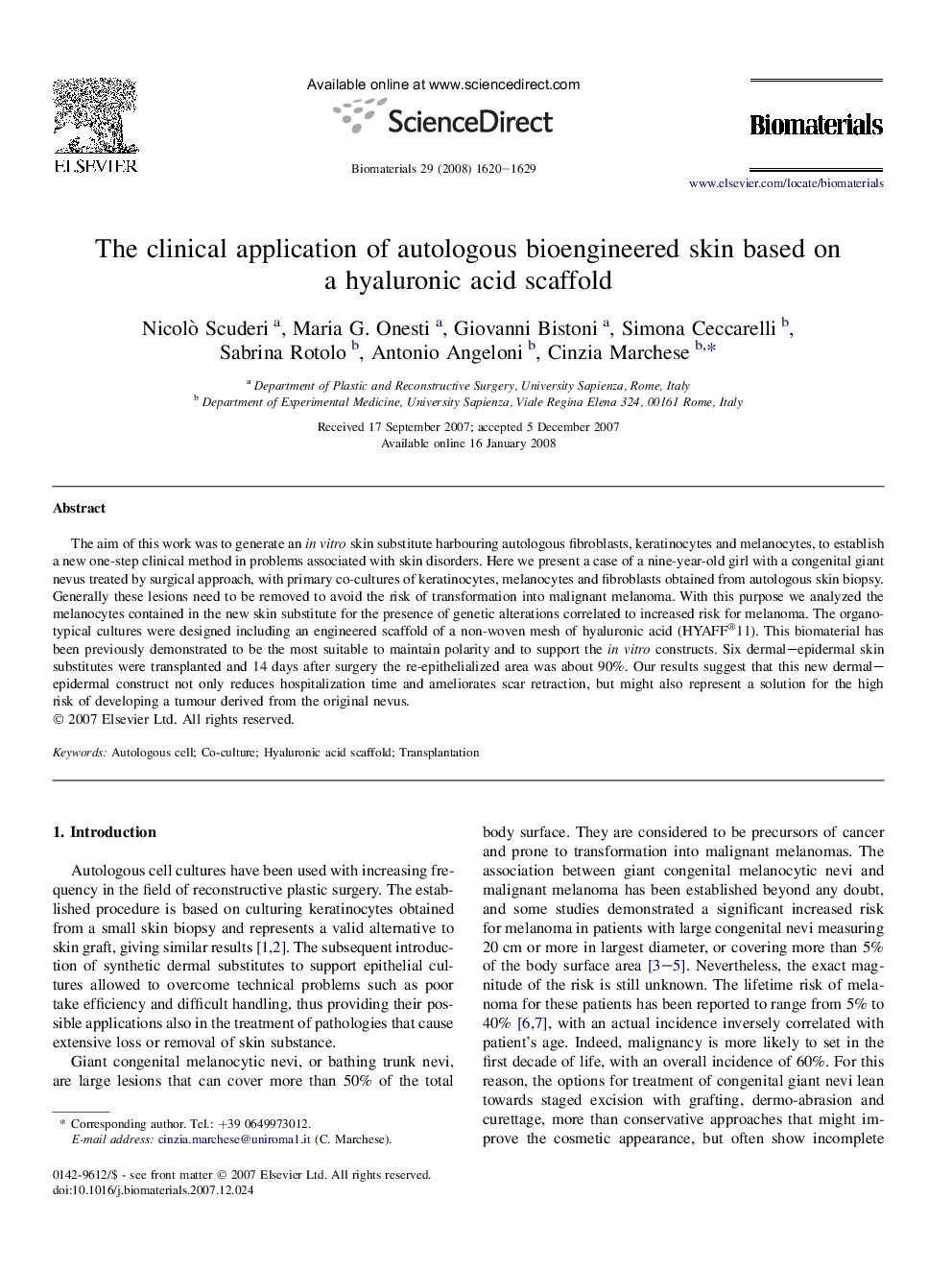| Article ID | Journal | Published Year | Pages | File Type |
|---|---|---|---|---|
| 10616 | Biomaterials | 2008 | 10 Pages |
The aim of this work was to generate an in vitro skin substitute harbouring autologous fibroblasts, keratinocytes and melanocytes, to establish a new one-step clinical method in problems associated with skin disorders. Here we present a case of a nine-year-old girl with a congenital giant nevus treated by surgical approach, with primary co-cultures of keratinocytes, melanocytes and fibroblasts obtained from autologous skin biopsy. Generally these lesions need to be removed to avoid the risk of transformation into malignant melanoma. With this purpose we analyzed the melanocytes contained in the new skin substitute for the presence of genetic alterations correlated to increased risk for melanoma. The organotypical cultures were designed including an engineered scaffold of a non-woven mesh of hyaluronic acid (HYAFF®11). This biomaterial has been previously demonstrated to be the most suitable to maintain polarity and to support the in vitro constructs. Six dermal–epidermal skin substitutes were transplanted and 14 days after surgery the re-epithelialized area was about 90%. Our results suggest that this new dermal–epidermal construct not only reduces hospitalization time and ameliorates scar retraction, but might also represent a solution for the high risk of developing a tumour derived from the original nevus.
